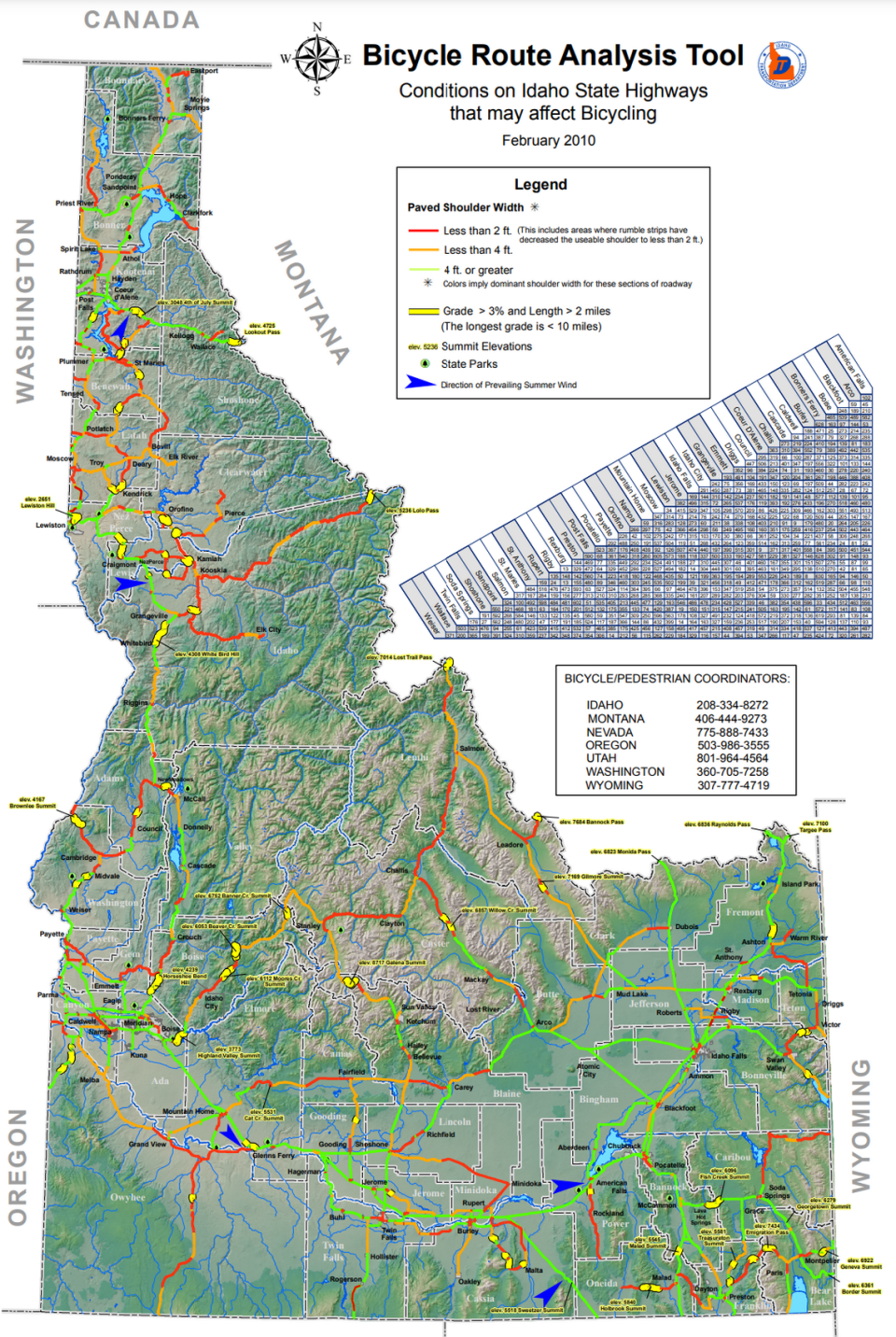Can you ride a bicycle on the freeway in Idaho? We’re in the minority for this unique law
Idaho and its laws tend to be slightly unique and even quirky when compared to many other states. For example, the Gem State has interesting laws on the possession and consumption of alcohol under 21 or what happens if you’re driving too slowly in the far left lane on the highway.
But perhaps one of Idaho’s weirdest laws is on whether bicycles are allowed on the freeway. For most states, it’s a resounding no. Not in Idaho, though.
The Gem State is just one of 11 states with no restrictions on people riding their bicycles on the freeway, while another five states have restrictive allowances. That means that bicyclists are indeed allowed on the freeway in Idaho, but specific laws still must be followed.
Here’s what to know about riding a bike on the freeway in Idaho.
Idaho’s laws for freeway and highway cyclists
While some states like California allow bicyclists on only about 1,000 miles of its freeways, and others have restrictions on riding a bicycle on highways and freeways, it’s fair game in Idaho.
The most important rule for bicycling on the freeway is the same as when riding on any public road — to ride as practicably close to the right-hand side of the roadway as possible. A helmet is also essential.
The Idaho Transportation Department has a map of all highway and freeway conditions for bicyclists, which indicates the size of the hard shoulder for bicyclists to ride in. Green-highlighted roads mean the hard shoulder is at least 4 feet wide, orange means between 2-4 feet, and red is less than 2 feet, not including rumble strips, which cyclists should not ride on.
Many of the highways around Boise and Southern Idaho are green, but there are instances of orange and red-coded highways, especially on routes up to the mountains, such as State Route 21 toward Idaho City.

There are a few other laws that Idahoans should be aware of for riding on the freeway and regular roads:
Similar to the law for vehicles, any bicycle on a roadway must have lights and reflectors visible from 500 feet between sunset and sunrise. For cyclists, a light-emitting divide must be placed on the front of the bike or rider, while a reflective device must be placed on the back of the bicycle.
Bicyclists can only ride two abreast while on highways and freeways, and they should not impede the normal and reasonable movement of traffic.
Bicyclists are expected to follow the typical rules of the road as regular vehicles. Title 49, Chapter 7 of the Idaho Statutes defines this as “due care,” which means looking out for pedestrians and other vehicles and remaining safe on the road.
The only exception to the above rule is the “Idaho stop law,” which allows bicyclists to treat a stop sign as a yield sign and a red light as a stop sign, meaning if it’s safe to proceed, a bicyclist can ride through a red light.
What other states have similar laws as Idaho?
While Idaho remains unique in allowing bicyclists on the freeway, it’s not alone. Here are the other states that also allow unrestricted access for bikes, according to the Bicycle Universe:
Alaska
Arizona
Idaho
Montana
Nevada
New Mexico
Oregon
Texas
Utah
Washington
Wyoming
Notably, many of the states in this list have populations on the smaller side. Idaho has a population of 1.9 million, with about a quarter of that based in Ada County and a statewide population density of 22 people per square mile.
The average population of all these 11 states is 5.67 million, according to data from the U.S. Census Bureau. That number is also significantly impacted by the 30 million people in Texas — not including Texas, that average drops to 3.24 million.
The average population of a state is approximately 5.76 million; out of the 11 states listed, only Texas and Washington surpass that average.

